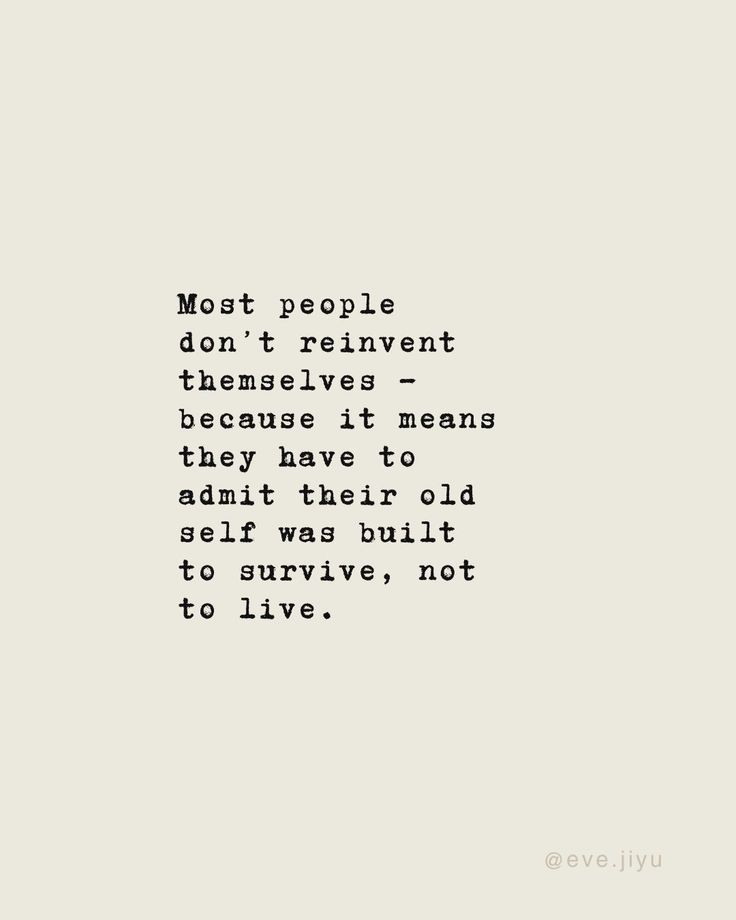Table of Contents
There are moments in life when you know — something has to change. Sometimes it’s a quiet whisper. Other times, it’s a full-blown wake-up call that slaps you across the face. Mine involved a chipped front tooth, a moral hangover, and my cat circling me with panic in his eyes.
If you’re wondering how to reinvent yourself, this isn’t your typical self-help guide filled with empty promises. This is the honest, messy truth about personal transformation — what it really takes, why it’s so difficult, and how to successfully rebuild your life from the inside out.
Glamorous? Not really. Transformational? Absolutely.
“And the day came when the risk to remain tight in a bud was more painful than the risk it took to blossom.”
— Anaïs Nin

My Wake-Up Call: When Life Forces You to Change
I didn’t plan to learn how to reinvent yourself through a crisis. Honestly, I don’t think anyone really does. Personal reinvention usually begins in a quiet moment of panic — or, in my case, a swollen lip, a chipped front tooth, and a memory blackout that left me feeling hollow inside.
That morning, I woke up in my bed, unsure how I got there. My cat was pacing anxiously around me, ice cubes scattered on the floor like forgotten clues. It was early, and I was hungover — not just from the alcohol but from a life that had stopped making sense.
I stared at my face in the bathroom mirror. My lip was twice its normal size, and my front tooth looked like it had been through a war. I felt shame crawl up my spine like a slow, heavy fog.
What followed wasn’t just physical pain. It was a moral hangover. I couldn’t go to work. I couldn’t even go outside. I lied to my colleagues, said I fell off my bike. My family never heard the truth.
But the worst part wasn’t the lie — it was the realization that I didn’t want to live like this anymore. Something had to change.
And that’s when the questions that drive every personal transformation started:
- Who am I really?
- How did I get here?
- Why am I wasting my life partying on weekends and working a job that kills my soul Monday to Friday?
That morning wasn’t the beginning of my healing — but it was the end of my denial.

The Psychology Behind Personal Reinvention
Understanding how to reinvent yourself starts with understanding why change is so difficult in the first place. Psychology tells us that transformation often begins when the pain of staying the same outweighs the fear of change. That’s exactly what happened to me.
I couldn’t pretend anymore. I no longer wanted a life that revolved around waiting for the weekend, numbing my emotions in loud bars, and chasing fun that always left me feeling emptier.
Why We Resist Personal Transformation
We often cling to our habits because they’re familiar — even if they’re hurting us. Psychologists call this cognitive dissonance: the discomfort we feel when our actions conflict with our values. I had to face the ugly truth that my values and my lifestyle weren’t just misaligned — they were in open war.
I considered my old habits as part of my identity, the real me. So I was afraid to change. After all, if I change like this, it will mean that I was not enough before.
Deep down, I had wanted more for a long time, but I didn’t know how to ask for it. Or maybe I was just too scared. Because what if changing who I was meant admitting that the old me wasn’t enough?
The Science of Identity Change
Psychologists often discuss identity foreclosure — the idea that we cling to outdated self-concepts because they give us a sense of certainty. But the truth is, certainty isn’t the same as truth.
When learning how to reinvent yourself, you have to confront false narratives: that you have to be agreeable, that you can’t say no, that you must live according to others’ expectations. Personal reinvention forces you to shatter these limiting beliefs.
5 Steps to Successfully Reinvent Yourself
After years of transformation and helping others through their own reinvention journeys, I’ve identified five crucial steps for anyone wondering how to change their life completely:
Step 1: Recognize When Change is Necessary
The spark that starts the fire doesn’t happen overnight. There were more blackouts after my wake-up call. More moral hangovers. But that night — the one with the broken tooth — was my turning point.
Warning signs you need personal reinvention:
- You feel disconnected from your authentic self
- Your values and lifestyle are misaligned
- You’re living for weekends and dreading Mondays
- You feel like you’re performing rather than living
- Deep down, you know you want more but don’t know how to ask for it
Change didn’t happen immediately, but recognizing the need for transformation was the first crucial step.
Step 2: Overcome the Fear of Losing Your Identity
The biggest fear in reinventing yourself isn’t failure — it’s the grief. Grief for the person you were. For the friends you outgrow. For the life you built that no longer fits.
It’s terrifying to admit that the version of you that once felt solid is no longer enough. You’re not just changing habits; you’re letting go of identities, relationships, even dreams.
Why personal transformation is so difficult:
- You’re afraid of losing your identity
- You fear rejection from others
- You fear failure or making the wrong choice
- You’re comfortable with familiar pain
I had to mourn the part of me that was always ‘the fun one,’ the one who didn’t say no, who didn’t speak up, who lived for the weekend and avoided the silence. That identity had to die. And it hurt. But it was necessary.
“You must be willing to let go of the life you planned so as to have the life that is waiting for you.” — Joseph Campbell
Step 3: Handle Society’s Expectations and Judgment
Society feeds us a timeline: career by 30, marriage by 32, stability by 35. But these milestones don’t account for emotional evolution. Psychology teaches us that identity is fluid. Growth means we’re constantly reshaping who we are.
Leaving the version of me that society applauded was one of the hardest parts of learning how to reinvent yourself. I had a good job. A steady paycheck. I was “successful.” But I wasn’t free. My soul felt like it was in a cubicle.
When I left it all behind, people didn’t cheer. Some mocked. Some didn’t understand. “So, did you have some kind of spiritual awakening?” they joked.
Why others resist your transformation:
- Change challenges the status quo
- It reminds people of their own stagnation
- Your growth makes them uncomfortable
- They’re invested in the old version of you
I had to make peace with being misunderstood. With being judged. And that taught me something radical: the people who are meant for your next chapter will never shame you for turning the page.
Step 4: Do the Inner Work of Transformation
At the heart of personal reinvention is inner work. It’s slow. It’s deep. And most of the time, it’s invisible. I started by questioning my beliefs. I challenged the voice in my head that said I wasn’t enough, that I had to prove my worth through achievement, busyness, or how many people liked me.
The exercise that changed everything:
I took a piece of paper and drew a line down the middle. On one side, I wrote down the things that made me feel alive — being in nature, writing, meaningful conversations. On the other, I wrote down the things that made me feel drained — small talk, drinking, overworking, pretending.
It sounds simple, but it changed everything. It helped me see myself clearly and listen to the quiet voice underneath the noise.
Key inner work practices:
- Question limiting beliefs regularly
- Identify what energizes vs. drains you
- Practice self-compassion during the process
- Journal your thoughts and feelings consistently
- Seek therapy or coaching when needed
As my self-worth grew, so did my courage. I stopped asking for permission. I stopped apologizing. I let myself take up space — not because I had become someone else, but because I had finally come home to myself.
Step 5: Take Action Despite Uncertainty
Personal transformation requires action, even when you can’t see the whole path. You don’t need to have everything figured out before you start. You just need to take the next right step.
I analyzed my traumas day by day until I found myself in a situation where I had to choose: keep living with them or confront and move on.
Don’t regret the friends you’ve lost during your transformation. Believe me — if it’s meant to be, they will come back. And if not… just let go of what’s not moving forward with you.

What to Expect During Your Reinvention Journey
Learning how to reinvent yourself is rarely a straight line. Here’s what the process actually looks like:
The Reality of Personal Transformation
What I thought reinvention meant then: Becoming the kind of person who drinks smoothies and wakes up early. I imagined running marathons, meditating at sunrise, and smiling politely at awkward parties without a drink in my hand. It felt mechanical — like ticking boxes to become a better version of myself.
What reinvention actually means: It feels less like becoming someone else and more like remembering who I was before the world told me who to be. I look back at the girl I used to be — lost, disconnected, ashamed — and I don’t judge her. I hold her with tenderness. She was doing her best. She was scared. But she was also brave enough to start asking questions.
The Messy Middle
Personal reinvention isn’t Instagram-worthy. There will be:
- Moments of doubt and regression
- People who don’t understand your changes
- Times when you question everything
- Periods of loneliness as you outgrow old relationships
- Fear about whether you’re making the right choices
But there will also be:
- Moments of profound clarity and alignment
- New relationships that truly see and support you
- Increased confidence and self-trust
- A sense of living authentically for the first time
- Freedom from others’ expectations

Your Next Steps: Starting Your Own Transformation
If you’re reading this and wondering how to reinvent yourself, you’re already taking the first step. Here’s how to begin:
Immediate Actions You Can Take Today
Start with truth and ask yourself:
- What part of my life no longer fits?
- What would it look like to be free?
- What would I do if I wasn’t afraid?
- Who was I before others told me who to be?
Small Steps for Big Changes
- Do the energy audit exercise I described above
- Write down your core values and compare them to your current lifestyle
- Identify one small change you can make this week
- Find one person who supports your growth
- Set boundaries with people or situations that drain you
Building Your Support System
Personal transformation is easier with support. Consider:
- Working with a therapist or life coach
- Joining support groups or online communities
- Finding mentors who’ve successfully reinvented themselves
- Building relationships with people who encourage your growth
Frequently Asked Questions About Personal Reinvention
How long does it take to reinvent yourself?
Personal transformation is ongoing, but you can expect to see significant changes within 6-12 months of consistent effort. Major life changes often take 2-3 years to fully integrate.
Is it too late to reinvent yourself?
It’s never too late to learn how to reinvent yourself. People successfully transform their lives in their 30s, 40s, 50s, and beyond. Life transitions actually provide natural opportunities for reinvention.
What if I make the wrong choices during my transformation?
There are no “wrong” choices in personal growth, only learning experiences. Trust yourself, stay flexible, and remember that you can always adjust course as you learn more about what you truly want.
How do I handle people who don’t support my changes?
Focus on building relationships with people who support your growth. It’s normal to outgrow some relationships during transformation. Not everyone will understand your journey, and that’s okay.
What’s the difference between changing and reinventing yourself?
Changing involves modifying behaviors or circumstances. Reinventing yourself is a deeper transformation that involves reshaping your identity, values, and entire approach to life.
The Freedom That Awaits You
Today, I live a life that’s meaningful, intentional, and wildly different from what it was. Personal reinvention didn’t strip me of my identity. It freed me from the parts that weren’t really me.
I have successfully learned how to reinvent yourself through trial, error, and tremendous growth. I’ve changed my habits, transformed my life, and I can say with certainty that I am on a meaningful path. I am living a life that is leading me towards complete freedom.
And isn’t that what we’re all searching for?

A Note to Anyone Standing on the Edge of Change
If you’re feeling stuck, afraid, or unsure — you’re not alone. Learning how to reinvent yourself is terrifying, but so is staying in a life that doesn’t feel like yours. The process is messy. You will lose people. You will cry. You will doubt yourself. But you will also find a version of you that feels like truth.
The world may not always applaud your growth. But that’s okay. You’re not here to perform. You’re here to become.
So let go. Grieve. Mourn the old you. Then rise — stronger, softer, wiser.
Personal reinvention isn’t a straight line. It’s a spiral. And every step you take toward yourself is a revolution.
And if no one has told you lately: You are allowed to change. You are allowed to evolve. You are allowed to want more.
Because more is possible. And it starts with you.
Ready to begin your transformation? Download my Self-Reflection Journal with powerful prompts to help you start your reinvention journey today.














0 Comments